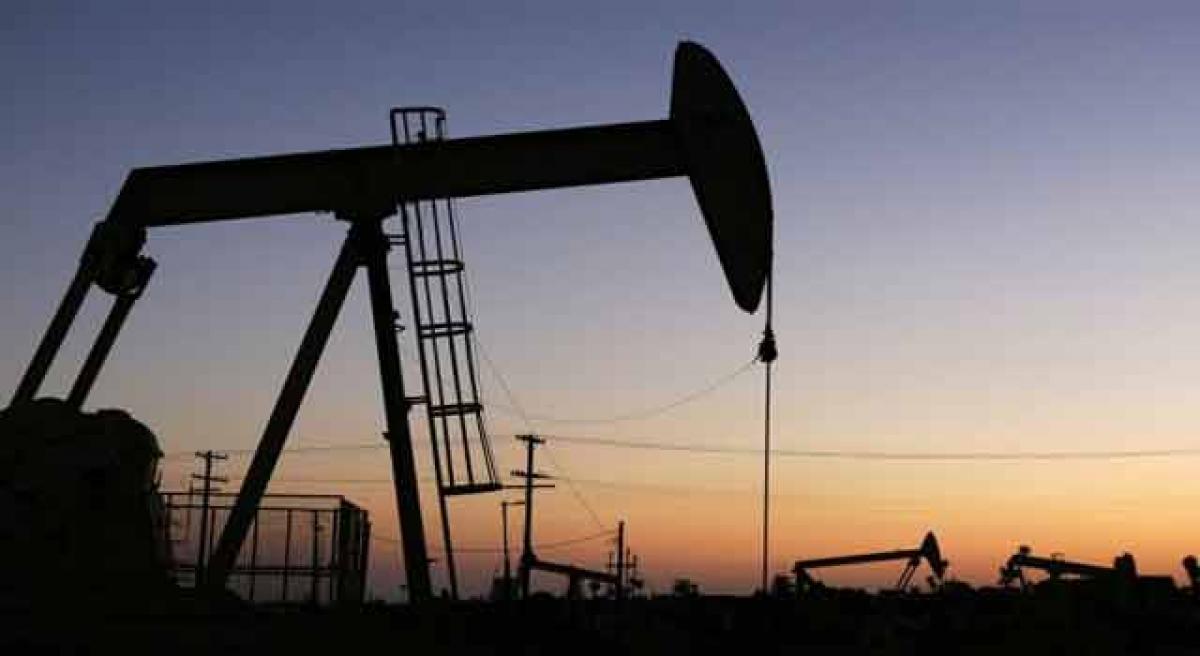Live
- A Guide to Temperature and Humidity Standards in Data Center Server Rooms
- Gadwal collector briefs on details of voters
- Jupally Krishna Rao takes part in Alampur rallu
- Bharath Prasad files 3rd Nomination
- Baisakh Month: A Time of Auspicious Beginnings and Sacred Festivals
- Oust BJD govt for overall development, says Shah
- Unveiling the Hidden Gems: Surprising Health Benefits of Garlic Peels
- Overcoming Sleep Struggles: A Comprehensive Guide to a Restful Night
- RTC bus hit the auto
- MLA Kuchukula Rajesh Reddy participated in the Birappa festival
Just In

The global oil prices are yet again on the rise, posing new concerns for the Indian economy. India has been enjoying low Current Account Deficit (CAD) despite slump in exports due to contraction in global demand, thanks to low oil prices. Estimates suggest that every dollar rise in the price of crude adds one billion dollars to India’s CAD. Higher CAD adversely impacts the value of rupee which ag
The global oil prices are yet again on the rise, posing new concerns for the Indian economy. India has been enjoying low Current Account Deficit (CAD) despite slump in exports due to contraction in global demand, thanks to low oil prices. Estimates suggest that every dollar rise in the price of crude adds one billion dollars to India’s CAD. Higher CAD adversely impacts the value of rupee which again can make imports costlier, thus having a cyclic impact on the economy.
The world oil prices have touched the 50 dollar per barrel mark for the first time in seven months. More precisely, the crude prices registered a whopping 80 per cent increase since January this year. The prices of crude oil in the international market rose by 20 per cent in April this year. This is the highest monthly increase in last seven years. Coming against a backdrop of falling oil prices in the last two years, this trend is certainly worrisome.
The Indian economy is adversely affected by the oil prices in multiple ways. The country has an import dependency in the oil sector to the extent of about 80 per cent. The high oil prices will have a cascading effect on domestic prices of almost all the commodities. Crude prices obviously fuel higher inflation.
The industry is the chief beneficiary of low interest regime. But, bullish oil prices may have an impact on the monetary policy, too. In fact, many more deficits worry the government finances. Higher inflation can lead to higher public expenditure burden as the government itself is a major spender.
The governments have to shell out more on at least fuel and fertiliser subsidies as the prices of these commodities are hyper sensitive to world oil prices. The fiscal deficit which is being reined in may raise its ugly head. The trade deficit can also widen as the low oil prices keep the import bill lower.
The corporate profitability is already shaky. Higher fuel prices can make the situation much murkier. Fuel costs have a bearing on the finances of several sectors. The surge in oil prices has certainly taken the government by surprise. The Economic Survey of the Government of India presented along with the budget predicted that the average price of crude in 2016-17 would be in the range of 35 dollars per barrel. Thus the continuing trend of high oil prices can upset the budget estimates.
The Modi momentum in several economic indicators is primarily attributed to low oil prices. Therefore, the NDA is likely to face challenges in the political economy as global oil prices rise. The oil prices are heading towards an unchartered territory as experts expectations have gone haywire. Crude is a global commodity and its prices are shaped by factors ranging from international demand and supply to machinations of oil cartels and speculators. The best thing is not to be gushed about the luxury of low oil prices.

© 2024 Hyderabad Media House Limited/The Hans India. All rights reserved. Powered by hocalwire.com







